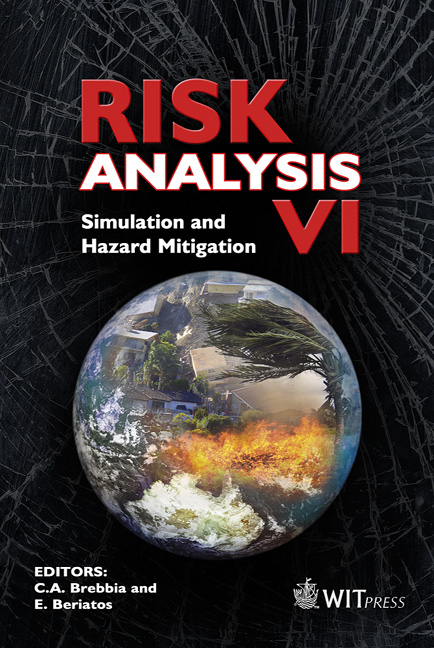An Efficient Global Methodology For Hazard Analysis Of Dam Complexes And Cascades
Price
Free (open access)
Volume
39
Pages
11
Page Range
343 - 353
Published
2008
Size
596 kb
Paper DOI
10.2495/RISK080341
Copyright
WIT Press
Author(s)
B. J. Dewals, P. Archambeau, S. Erpicum & M. Pirotton
Abstract
Hazard analysis of dams arranged in a complex or cascade may involve the assessment of a large number of different scenarios of combined failures. However, a tremendous computation time would be needed to perform a detailed modelling of the flows generated by all possible scenarios. Therefore, the present paper describes a methodology for analysing the flows induced by the most relevant incidents occurring on a complex or in a cascade of dams and reservoirs. The methodology combines several hydrodynamic models, including the two-dimensional flow solver WOLF 2D and a simplified lumped hydrodynamic model, to simulate (i) the flows induced on the dams complex, (ii) the potential breaching in the cascade of other dams, as well as (iii) the propagation of the flood wave in the whole downstream valley. The application of the methodology to a practical case study involving a complex of five dams is also described. Keywords: dam break, dam breaching, hydrodynamic modelling, finite volume, risk analysis, breach parameters, sensitivity analysis. 1 Introduction Flood waves induced by catastrophic events such as a dam break or a dam breaching are regularly studied in the framework of risk analysis procedures. The assessment of this risk, mathematically evaluated by the product of the probability of a failure and the potential damage in such an event, involves the identification of inundated areas as well as water depths and flow velocities of the induced wave. Besides such extreme failure events, other types of dysfunctions may also occur on a dam site (e.g. failure of penstocks, valves …) and are able to induce
Keywords
dam break, dam breaching, hydrodynamic modelling, finite volume, risk analysis, breach parameters, sensitivity analysis.





